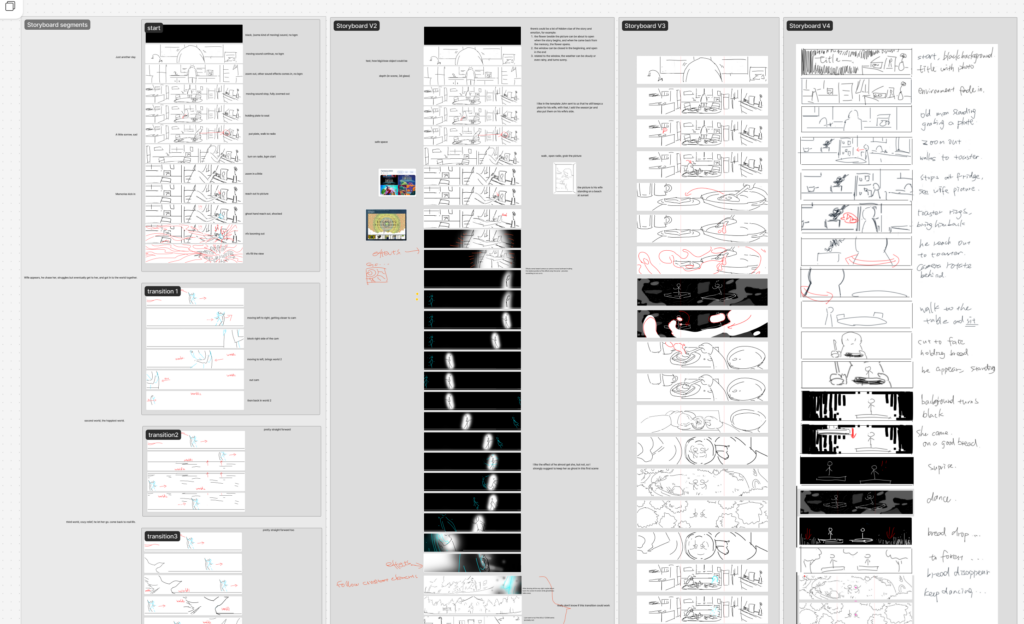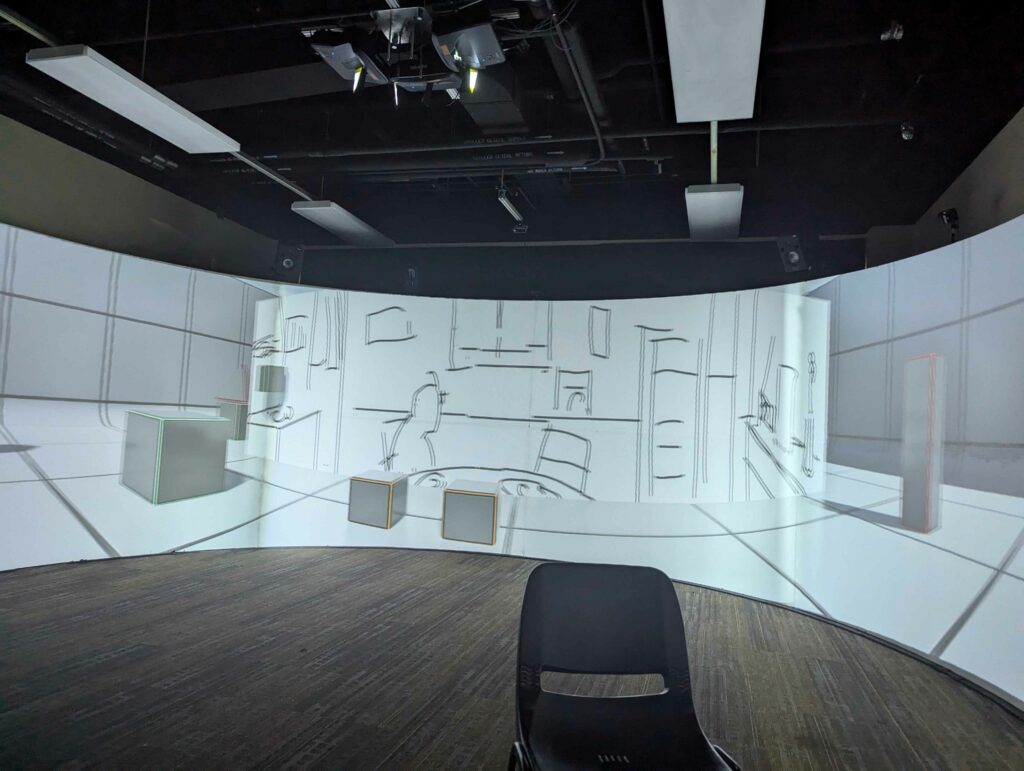1. Mocap
Since we were new to the motion capture pipeline, reaching out to the mocap studio and testing the entire process became our top priority. With faculty Mo’s help, we contacted Justin from the main campus and arranged a time for our first test session next week.
2. Storytelling
In animation, crafting mood curves is crucial for storytelling. After aligning with our instructors on the overall tone of the film, we introduced additional narrative elements, such as photographs of the elderly couple, mementos from their shared life, and the visual style of the fantasy world.
3. Mistake Made
On the art side, we received valuable feedback from Subject Matter Expert Ricardo, which helped us refine our storyboard and continue researching art styles. However, a miscommunication with the instructors caused us to briefly deviate from the intended direction. Fortunately, after further discussions, we were able to realign with the project’s vision.

4. Move to the Cavern Screen
One challenge we encountered was that our storyboard drafts couldn’t fully capture the depth and space of the scenes. To address this, we began blocking out the first scene—set in a kitchen—using Unreal Engine. Key considerations include laying out the space to make the old man’s movement feel natural, placing furniture in a way that is both realistic and aesthetically pleasing, and ensuring that key props are positioned to support the story’s progression.

Working with the cavern presented many unknowns. We needed to understand how object sizes, camera movements, and scene transitions would impact the immersive experience—whether certain movements might cause dizziness or cutting between shots would even be feasible. These uncertainties slowed our progress as we navigated discussions on how best to proceed. In the end, with guidance from our instructors, we agreed that the best way forward was to start implementing our ideas and test them as we go. Only then could we discover what works and what doesn’t.
